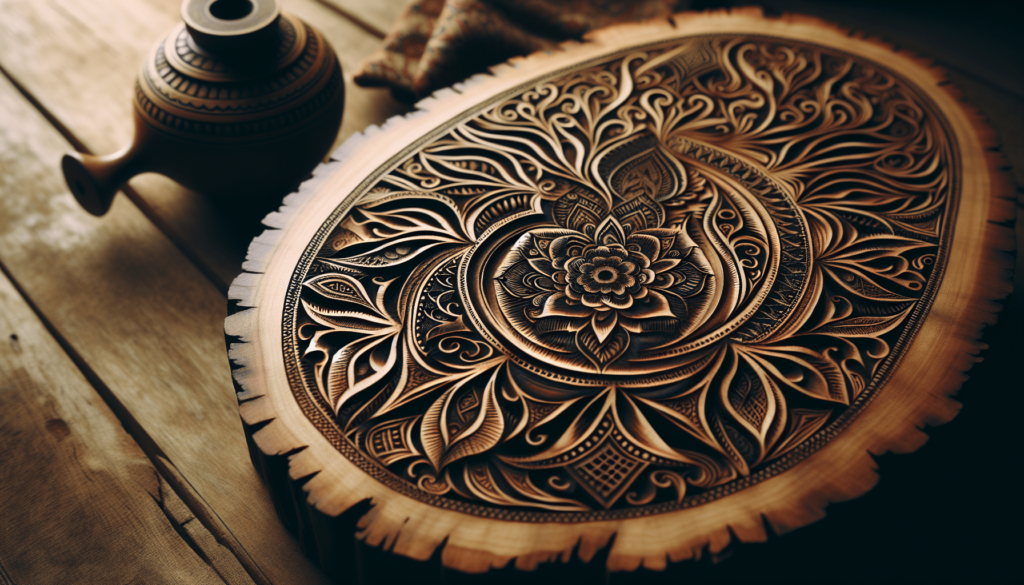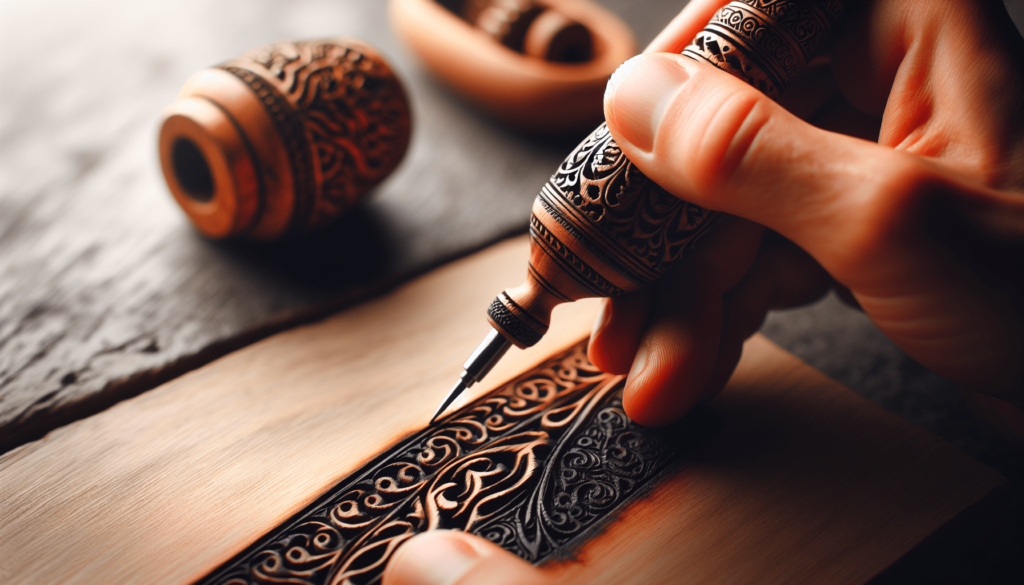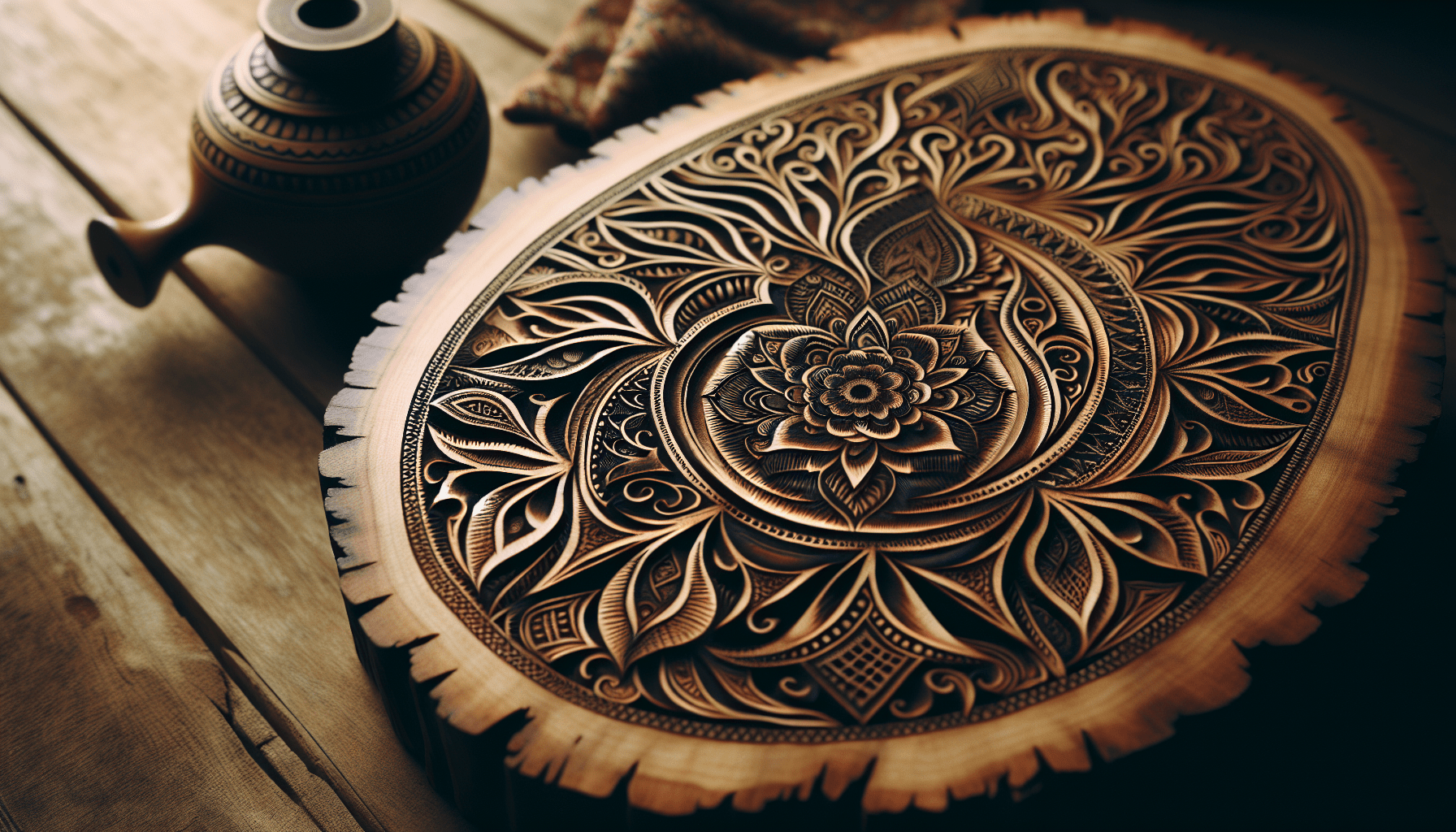I recently stumbled upon an intriguing topic that delves into the artistic value of pyrography, a craft that involves the controlled application of heat to create designs on various materials. In my article “Is Pyrography Considered an Art of Burning the Material True or False?” I explore whether this unique practice is genuinely seen as an art form. Pyrography, often referred to as wood burning, has been a method of artistic expression for centuries, but its recognition as a legitimate art often sparks debate. Join me as I take a closer look at the history, techniques, and perceptions of pyrography to determine whether it truly deserves its place among the creative arts. Have you ever heard of pyrography? It sounds a bit mysterious, doesn’t it? Quite like something you’d come across in an old magical book, smuggled out of a dusty attic. My first encounter with the word made me think of some alchemist’s work. But let me tell you, it’s much more tangible and fascinating than spells and potions.
Is Pyrography Considered An Art Of Burning The Material True Or False?
So, let’s cut to the chase. Is pyrography considered an art of burning the material? True or false? To put you out of your misery of suspense right at the beginning, the answer is a resounding “True!” But bear with me – there’s much more to this fiery form of art than a simple yes-or-no answer.

What Exactly is Pyrography?
Pyrography comes from the Greek words “pur” meaning fire and “graphos” meaning writing. If you put them together, you get “writing with fire.” Fancy, right? This art form involves burning designs onto a surface, typically wood, but also leather, cork, or even gourds! The heat application leaves a dark mark, which contrasts beautifully with the untouched parts of the material.
A Brief History of Pyrography
Let’s hop into our time machine and travel back a few centuries. Pyrography has been around since the dawn of human creativity. Early humans used heated sticks to create simple decorative marks. Fast forward to the Victorian era, and pyrography was the trend equivalent of today’s viral TikTok dance. People used metal tools heated in a fire, and later, pokerwork tools heated by electricity to create detailed artwork.
How Does Pyrography Work?
I know you’re probably itching to know how pyrography really functions. No, it’s not about running around with a candle and twisting your wrist with fervor. Essentially, you burn your design onto a surface using a pyrography pen. But not just any pen – a pyrography pen. Think of it as a soldering iron but for artists.
You can vary the intensity and darkness of the burn by adjusting the temperature. Different tips can create different effects, much like how you might swap out paintbrushes for varied textures in a painting. Think of each burn mark as an artist’s brush stroke.
The Artistic Elements of Pyrography
Now, let’s delve into why pyrography is undeniably an art. Pyrography involves many key artistic elements. From texture to shading, it’s not just about setting stuff on fire. Trust me, those who do this well don’t get their kicks just from playing with heat.
Texture
Different materials provide various textures which interact uniquely with the heat. Wood grains, for instance, can make some parts burn darker than others. Leather can give you a smoother texture, but with some careful control, almost anything is possible.
Shading
Adjusting the pressure and duration of the heat application allows for a range of shades. It’s comparable to how pencil sketches employ different strokes and pressures to create light and dark areas. You can make your artwork pop with depth and dimension just through shading techniques.
Precision and Control
It’s a lot like controlled chaos. The ability to balance heat, pressure, and the materials allows artists to express themselves with the same scrutiny as any other traditional art form. The finesse required for this steers it far from a casual hobby and nudges it firmly into the realm of artistry.
Materials and Tools for Pyrography
To get started, you will need some basics. Don’t worry, you won’t have to go rob a dragon’s treasure vault or anything.
| Material | Typical Uses and Tips |
|---|---|
| Wood | Birch, basswood, poplar, and maple are commonly used due to their fine grains and lighter colors. |
| Leather | Veg-tanned leather works well because it has a firmer surface which takes the burn better. |
| Cork | Good for craft projects, but cork burns fast, so be gentle! |
| Gourds | Yep, those pumpkins’ cousins. These are used mainly for decorative pieces. |
Now for the tools:
Pyrography Pen
This is your main deal. Options range from solid-point burners to wire-nib burners, each providing different levels of precision and ease of use.
Tips and Points
Much like a painter swaps brushes, in pyrography, you’ll find yourself switching between different tips. You have round tips, flat tips, shading tips, and more. Each tip allows for different strokes, textures, and effects.
Safety Gear
Let’s not forget the less glamorous but crucial part – safety gear. A well-ventilated space is non-negotiable. Smoke from burning materials isn’t exactly aromatic. A mask, especially when working on leather, can be a lifesaver. Pyrography gloves can protect you from accidental burns.
Pyrography Techniques
So you’ve got your materials and tools, and you’re thinking, “Now what?” Let’s break down some basic techniques.
Tracing
Get your design ready on paper. You can transfer it onto the wood or leather using tracing paper. This gives you a blueprint to follow, much like how a tattoo artist would stencil a design onto the skin before diving into the detailed work.
Line Work
This is your outline work, the skeleton of your design. Think of it as the first draft of an essay. You’re laying down the vital framework, making sure to control your hand’s speed and pressure.
Shading
Next comes shading, adding the flesh to your skeletal outline. Varying the temperature and pressure gives you the light and dark areas, depth, and dimension.
Detailing
Finally, focus on the detailing like a novelist would polish their prose. These final touches will make your artwork stand out, whether it’s intricate textures or fine lines.

The Role of Creativity in Pyrography
Now, I hear you – “Isn’t this just glorified burning?” Well, yes and no. Sure, the basics are about burning, but let’s not forget about the creativity involved. There’s so much room for imagination:
Design Your Own Patterns
Here’s where you let your creative juices flow. Whether you’re inspired by nature, geometric shapes, or abstract ideas, create a design that is uniquely you.
Experiment with Colors
Did you know you can add colors to your pyrography pieces? While burning gives a range of browns and blacks, you can use watercolors, pencils, or even stains to add a splash of color.
Incorporate Mixed Media
Don’t pigeonhole yourself! Combine pyrography with other art forms like painting, carving, or even fabric arts. Imagine a wooden painting with both burned design and painted elements – a multi-dimensional visual treat.
Common Misconceptions About Pyrography
Like many art forms, pyrography comes with its baggage of myths and misunderstandings. Let’s set the record straight.
“It’s Just Burning Stuff”
Alright, this one’s old. Pyrography is as much about precise control and creativity as it is about heat. There’s a world of difference between a bonfire and a detailed pyrography piece.
“You Need to be Super Artistic”
Sure, a bit of artistic flair helps, but like any other skill, practice is the golden key. Many folks start with simple designs and level up their skills over time.
“It’s Dangerous”
True, playing with heat isn’t without its risks. But with the proper safety measures – like working in a well-ventilated area and using protective gear – it’s no more dangerous than cooking.
Benefits and Therapeutic Value
Now, besides the artistic joys, pyrography offers some delightful side benefits you might not have considered.
Stress Relief
Much like coloring books for adults, the focus required in pyrography can be a great stress buster. The repetitive, meditative nature of burning designs can almost feel like a zen experience.
Improving Focus and Patience
Pyrography demands patience and precision. It’s like meditation but with an artistic output. Your ability to focus sharply improves, which can spill over positively into other areas of your life.
Building Dexterity
Over time, your manual dexterity improves. The control you develop over the pyrography pen is like practice for your fine motor skills.
Pyrography in Modern Art and Culture
We can’t ignore how this ancient art form has gracefully kept pace with modern trends. Pyrography is finding its place in contemporary art and design.
Home Decor
From wall art to customized furniture, pyrography is making waves in the home decor scene. Imagine a beautifully burned wooden headboard or a table with intricate designs etched into it.
Gifts and Keepsakes
Handmade gifts always have a personal touch. A customized name plaque or a memorable piece of art can make for heartwarming, unique presents.
Professional Artistic Platforms
Artists are stepping onto platforms like Etsy or Instagram to sell and showcase their pyrography pieces. It’s not just a hobby; for many, it’s a livelihood.
Challenges in Pyrography
Of course, it’s not all a walk in the park with a fire stick. Here are some challenges you might face:
Mastering the Tools
It takes time to get used to the different tips and temperatures. Much like how a musician practices scales, a pyrographer needs to get the hang of their instrument.
Material Behavior
Different woods burn differently. Pine, for example, has resin pockets that can affect your burn. Understanding your medium is a journey in itself.
Mistakes Aren’t Erasable
Unlike pencil and paper, there’s no erasing a burn mark. Every mistake is a lesson carved into the material. This adds both pressure and a certain thrill to the art.
Embracing Mistakes
But you know what? Mistakes can sometimes lead to the happiest of accidents. Maybe that unintended dark burn adds character to your piece. Embracing these mishaps can lead to unexpected beauty.
Getting Started with Pyrography: A Step-by-Step Guide
Convinced yet? Ready to dive into the world of pyrography? Here’s a little guide to get you started.
- Gather Your Materials: Wood, leather, or another burnable material.
- Get Your Tools: A pyrography pen and various tips.
- Design Your Art: Sketch your pattern on tracing paper.
- Transfer the Design: Use tracing paper to get your design onto the material.
- Practice, Practice, Practice: Before going full-scale, practice on scrap material.
- Start Burning: Begin with line work, move to shading, and finish with detailing.
- Safety First: Ensure you’re working in a ventilated space and take periodic breaks.
The Future of Pyrography
So what does the future hold for this ancient yet modern art form? With the increasing trend towards personalized, handmade items, pyrography is set to sustain, if not grow.
Digital Innovations
Artists are integrating digital designs with pyrography, using software to create intricate patterns that can be burned with precision tools.
Community and Learning Platforms
With online communities growing, the exchange of techniques and ideas is easier than ever. Platforms for learning and sharing make it accessible to anyone interested.
Eco-Friendly Options
A shift toward sustainable materials and eco-friendly practices is influencing the art world at large, including pyrography. Think responsibly sourced wood and non-toxic finishes.
Final Thoughts
Pyrography is, without a doubt, an art of burning material. But more than that, it’s a rich, creative practice that combines age-old techniques with modern innovation. Whether you’re looking to pick up a new hobby, develop a skill, or dive into a therapeutic practice, pyrography has something for everyone. So, are you ready to light that creative spark and start burning?
Now it’s your turn. What will you create with pyrography? The only limit is your imagination – and perhaps your patience. Trust me, it’s worth every minute.

